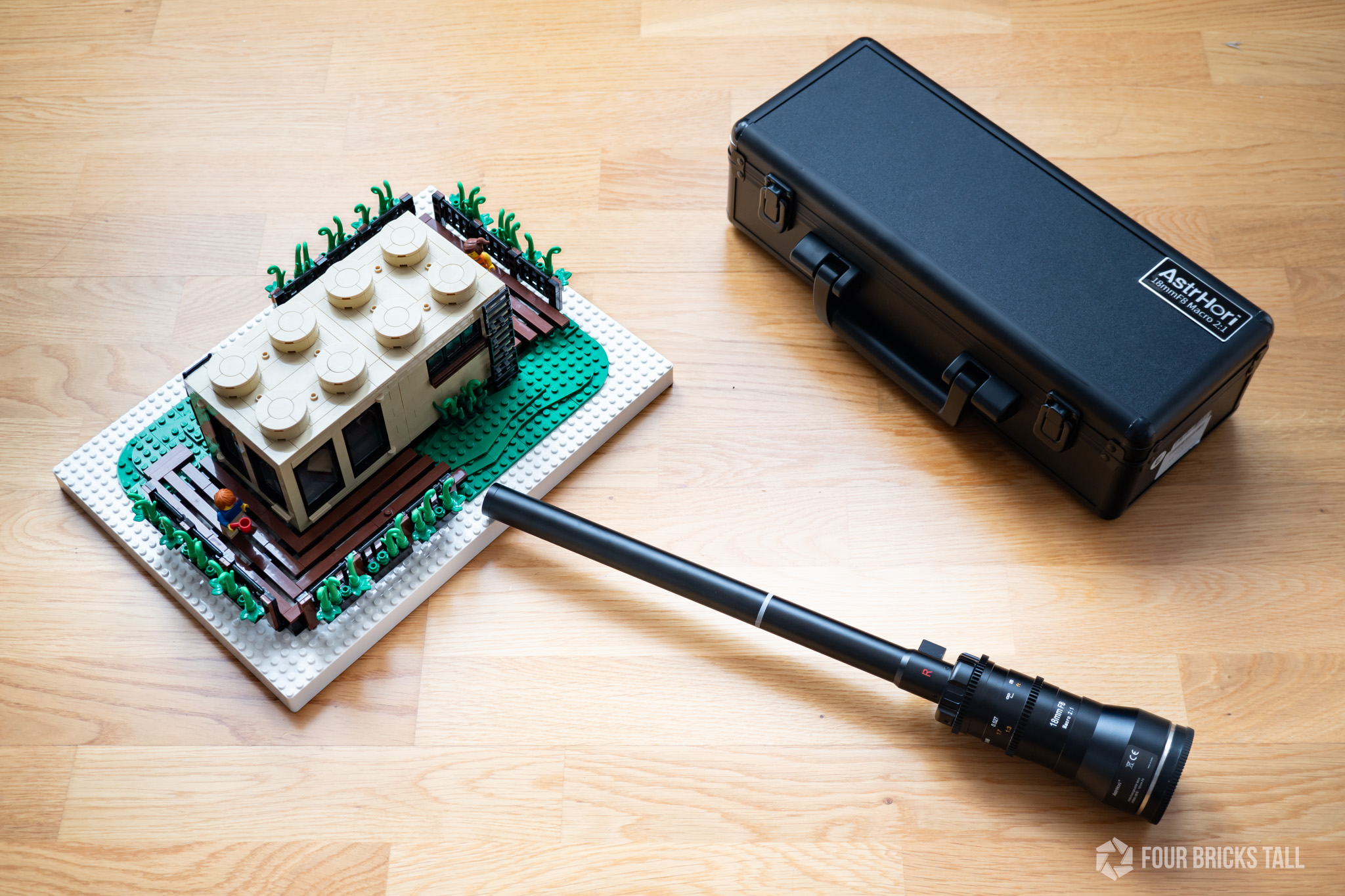It’s been five years since the first probe lens by Laowa was launched with a hefty price tag, but now newcomer lens manufacturer Astrhori have come out with their own affordable version specifically for APSC cameras.
“Affordable” is relative, of course, but $719 for a tool that can solve a lot of problems and open up creative possibilities for LEGO and miniature scale photographers is worth checking out.
In this review, I’m going to see just how well the Astrhori 18mm f/8 Macro Probe Lens can get into tight spaces like LEGO models and what kind of still images I can get with it. I’ll shoot a few types of buildings like modulars and fully closed models because they each present unique challenges, especially with lighting.
Disclaimer: Astrhori sent me this lens for review but all opinions are my own. I have an affiliate link and could earn commissions if you use it, which goes toward creating this type of content.
Getting a foot in the door
I wrote about how to shoot and light LEGO interiors before but that involved pushing a regular macro lens right up against doors and windows, breaking apart an official set, or building MOCs with removable walls. The probe lens offers another way: just slide it through a standard LEGO door or window.

Having the lens inside the model like this allows photographers to capture a different perspective– a bug’s eye view– and get closer to details. There’s not a lot of room to pivot left or right through a door frame though but if you remove the door itself, you can get a little bit more space to maneuver and get different compositions.

Here’s the shot I got from the setup above with just a single LED panel as my light source:

Because the top can be removed from this arcade model, I could just hold an LED panel over it to get light in there. LEGO Modular Buildings are designed this way so those will be the easiest kind of model to light as well. You do have to be mindful of framing so you don’t get empty space where there should be a ceiling.
Wide angle
I love that the lens was able to capture a lot more of the environment which is important to me as a LEGO builder. That’s the power of an 18mm lens– the wide angle creates more immersive photos, bringing context to the scene.
On an APSC camera, that 18mm translates more into a 27mm. It’s not wider than my Tamron 24mm f/2.8 on my full frame camera but it’s really close. (Note: Astrhori makes a full frame 28mm f/13 macro probe lens for a similar price.)
Sharpness
I shot the arcade photo at f/11 which is one stop smaller than its maximum f/8 aperture to get a slightly sharper image. I found that overall, the Astrhori 18mm f/8 probe lens was a bit soft across all apertures compared to my other macro lenses like the Sigma 70mm f/2.8 DG. The Astrhori is probably the weakest of my macro lenses in that regard.
But does it really matter?
I think for my needs, it’s sharp enough. I mostly do LEGO photography as a hobby and share on Instagram, Flickr, and Tumblr, but I wouldn’t disregard this lens if I were shooting another commercial project like a book or ad. My photos aren’t going to be printed on billboards or anything close to that scale, so the lens is fine for what I do. It’s just a matter of getting used to personally because I know what my other macro lenses can deliver in terms of sharpness.
Magnification
In terms of magnification, the Astrhori 18mm f/8 can deliver 2:1 which none of my other macro lenses can do. They all max out at 1:1.
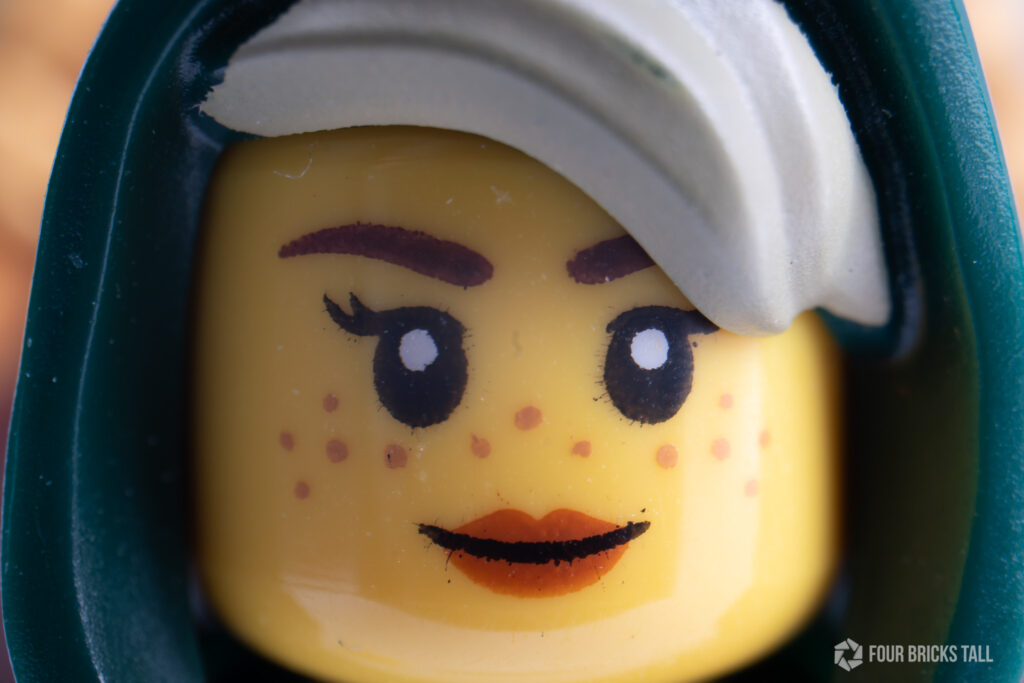
Granted, I never shoot at 2:1 for my minifig photos because I don’t want to be so close up that I can see all the ink splatter from the pad printing. But who knows, I may start doing some detail shots to show features in a LEGO set or explain my lighting. This lens opens up those possibilities.
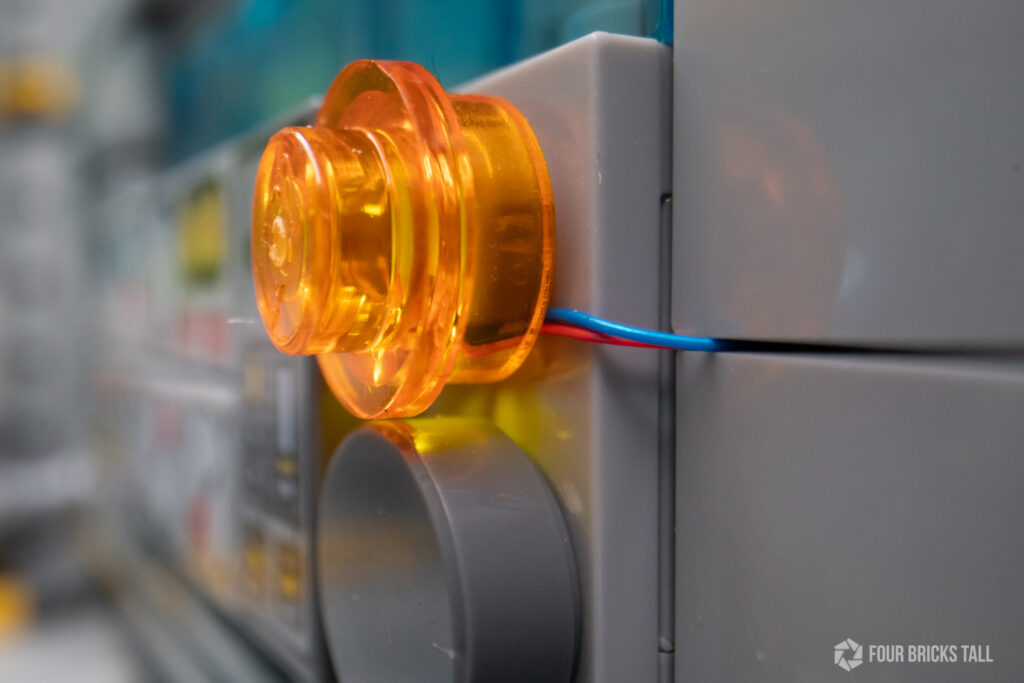
Lighting and glare
Probe lenses are designed to go into small spaces and that means lighting is usually an issue. You can’t shoot where there’s no light.
The Astrhori 18mm f/8 macro probe lens has built-in LEDs around the front of it, but I would never use those for LEGO photography because on-axis light is ugly and causes glare on shiny elements.
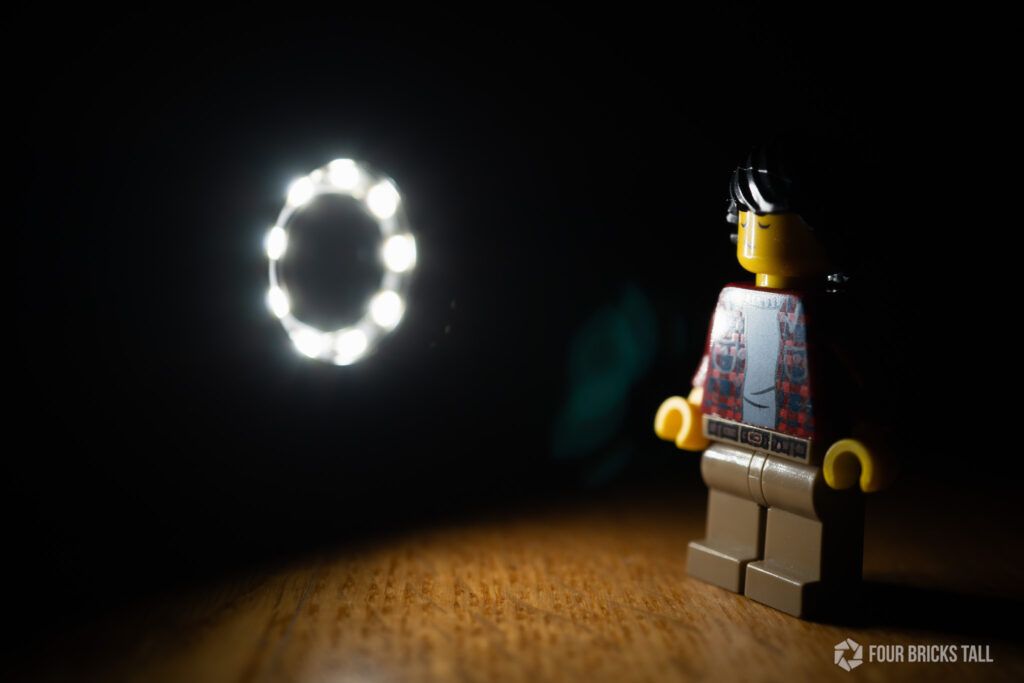
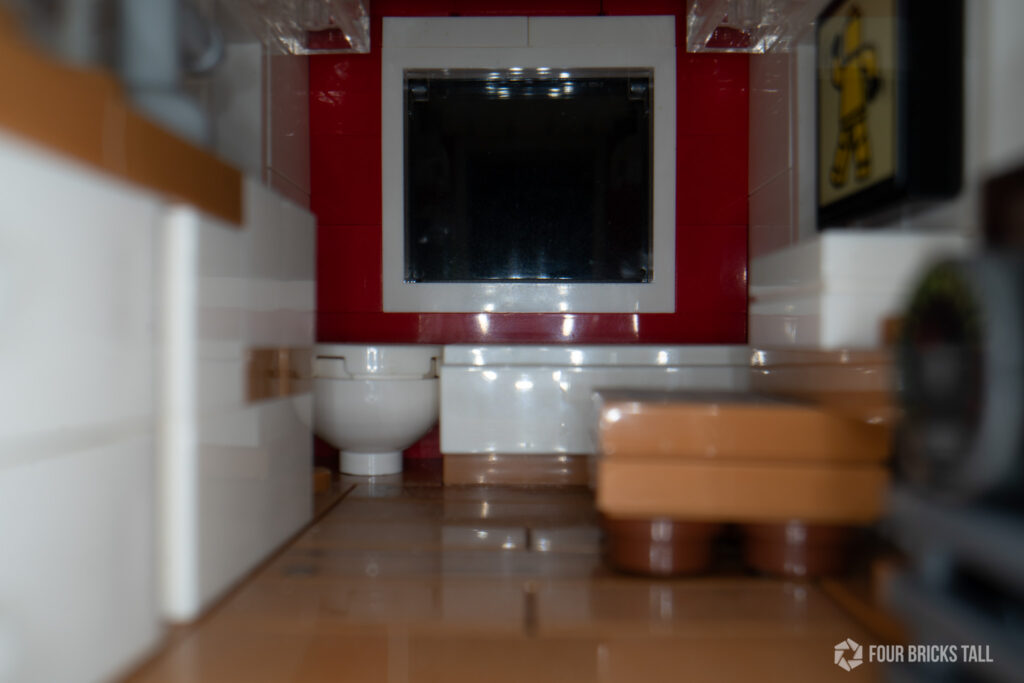
However, those LEDs could be useful for HO scale, dollhouse or other miniature photography that doesn’t involve reflective material. There’s a USB-C port on the barrel where you can connect a powerbank.
Instead, I would use external lighting, practical lighting, or a combination of the two. These shots inside my space themed book nook were lit with a bunch of LEDs placed in the set with no other external lighting.
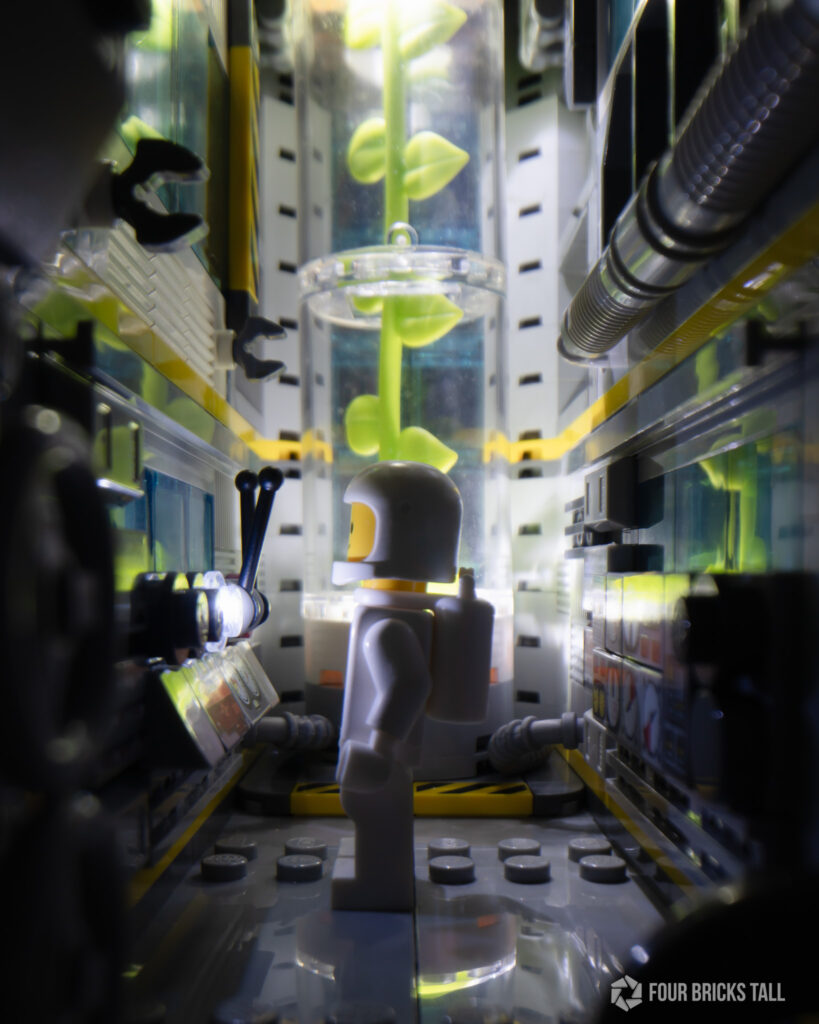
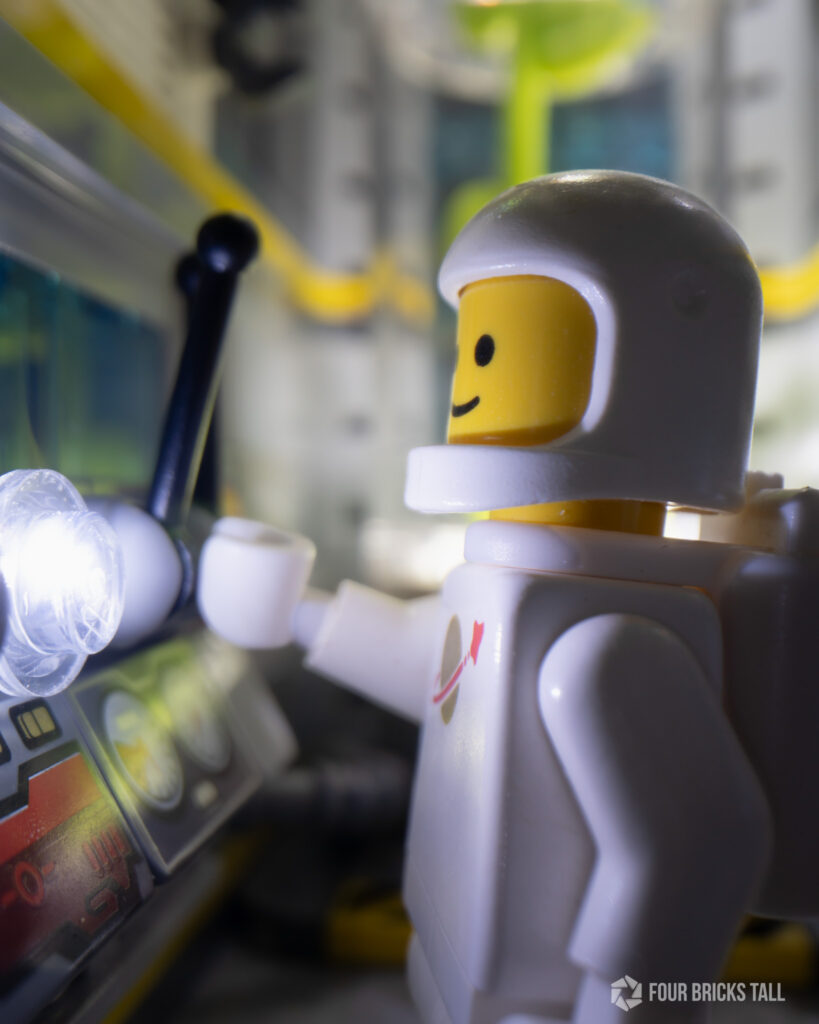
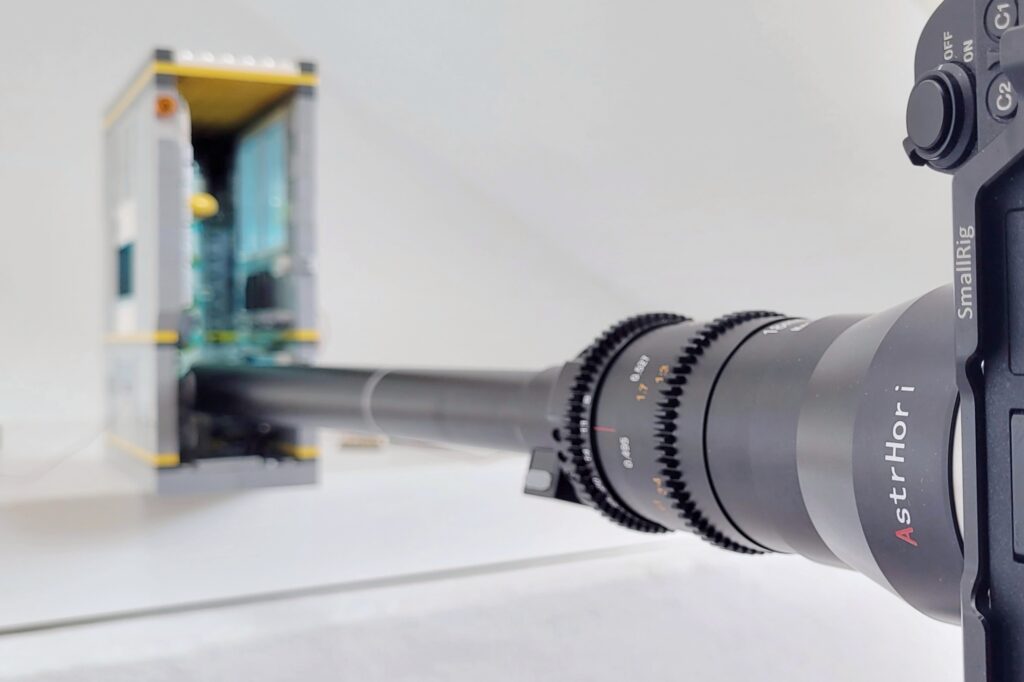
These tiny LEDs in the bricks aren’t powerful at all so I had to increase the exposure to 2 seconds to allow for more light to build up on the sensor. If I were to do a video rather than a still, I’d have to increase my ISO instead, which would probably add a lot of noise on my Sony a6500. I’ll test that in my video review later.
I know a lot of people shoot with available light so I took out my tiny red house MOC to the outdoor spaces around my house at different times of day to see what I could get.
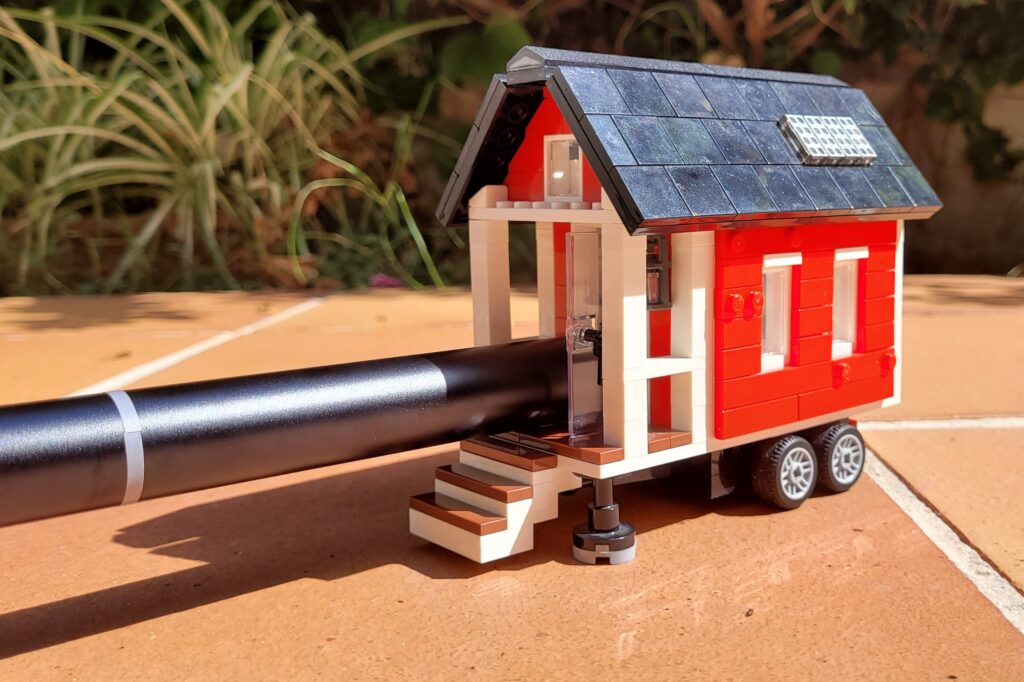
It’s summer now with clear skies for weeks on end which is good for this lens because you need a lot of light. The only light in the model is the direct sunlight that came in through the small windows.
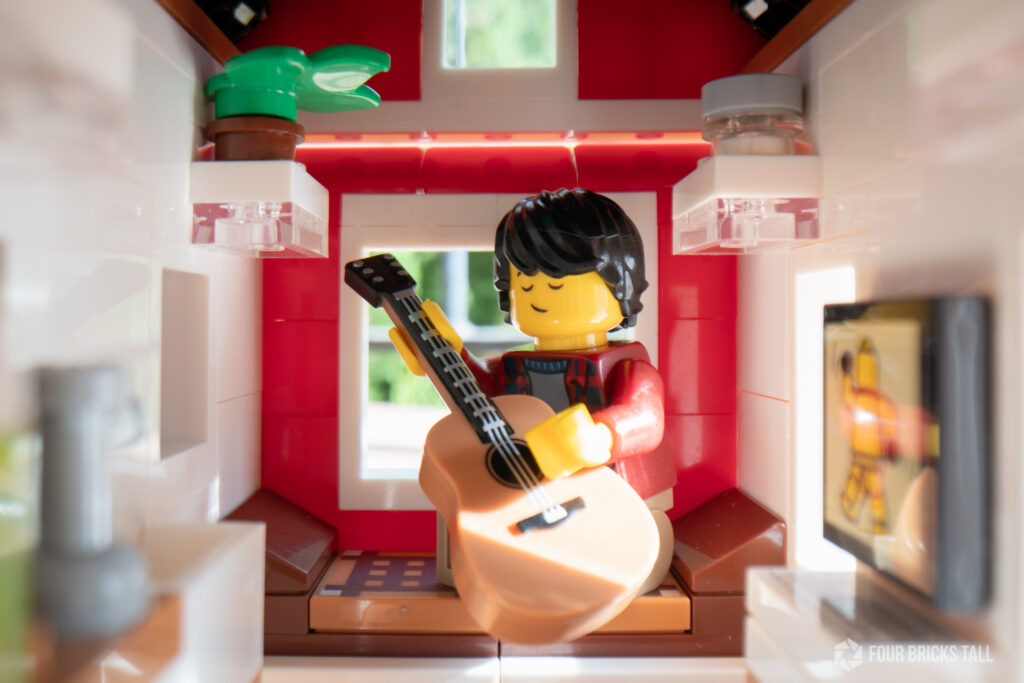
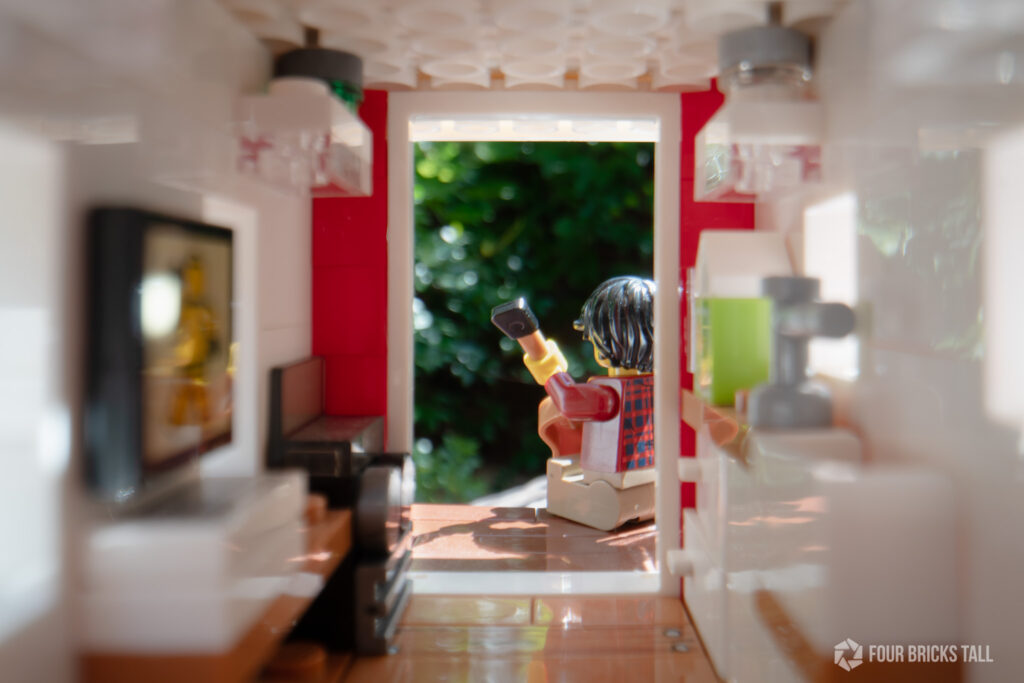
I build my MOCs with lighting in mind so the roof on this model is retractable. Slightly opening it up and turning the tiny house a bit resulted in more dramatic lighting.
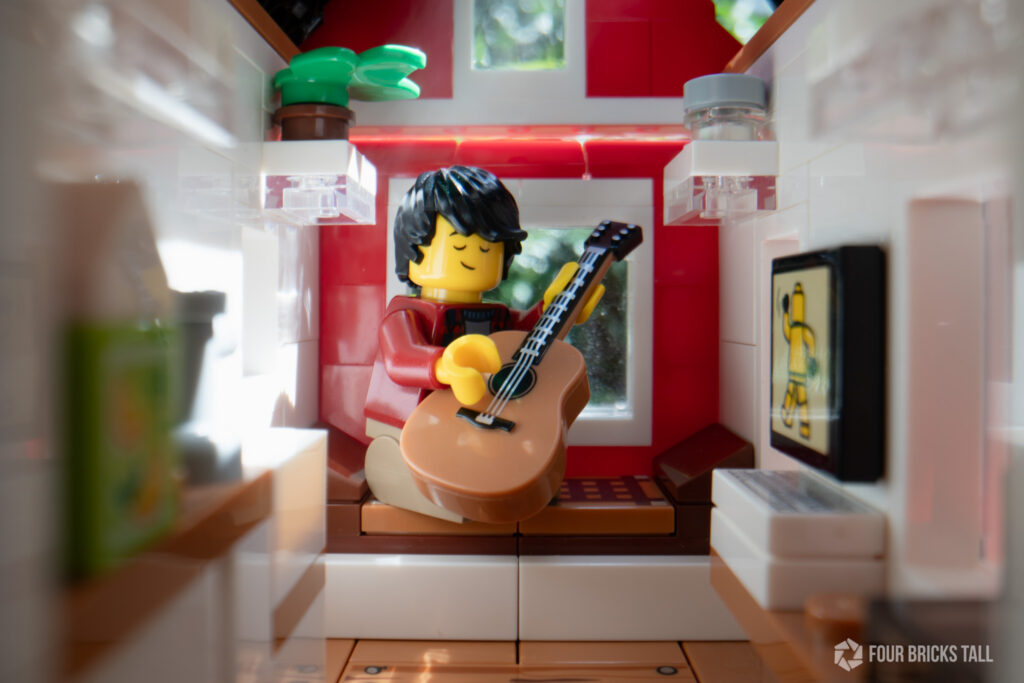
I’d crop that top or frame tighter to get that open roof out of the shot but I left it in here so you can see where the light was coming in from.
Having said and done all that, I don’t see myself shooting outdoors with this lens unless it’s around my house. The probe lens is too cumbersome to carry, even more so when taking anything but a minifigure outside. And it looks weird enough that people will come and investigate what I’m doing which is 100% what I do not want to happen.
Who is this lens for?
If you’re an advanced photographer who shoots small objects in tight spaces, this might be your dream lens. You’re looking to include the environment in your shots and want to get a different perspective from the macro lenses you already own. You generally shoot indoors in your studio. You have a tripod or other stable support and good knowledge of light. You also have $719 to spare.
If you’re a video content creator, you additionally have a slider, ideally motorized, and a ton of light sources.
This lens isn’t for beginners. If you aren’t already used to shooting with a macro lens or a manual lens, this probe lens will be overwhelming and frustrating to use.
Stylistically, the Astrhori 18mm f/8 probe lens isn’t suited to photographers who like to isolate single figures against a lot of bokeh. The lens won’t offer a shallow depth of field or nice bokeh due to its short focal length and smaller maximum aperture.
Speaking of, here’s the best bokeh I could get with this lens:

I love the Astrhori 18mm f/8 macro probe lens because it does exactly what I want it to do: get in very small spaces that my other macro lenses can’t possibly reach. It’s nearly perfect for my workflow and the kinds of sets I like to shoot.
I’ll be taking more photos inside my book nooks and MOCs, and revisiting official LEGO sets now that I have this powerful creative tool. I’m really excited about it!
I’m even thinking about getting my long-stagnant video production hobby moving along now because the Astrhori probe lens allows for some fun push-in shots through a LEGO set. I don’t have a ton of videomaking experience or gear and so I’ll just have to make do with a manual slider (that I already own), slo-mo recording, and speed ramping in post to get around some stabilization issues for now.
The Astrhori 18mm f/8 macro probe lens for APSC cameras comes in at just $719 and is available in Sony E, Fuji X, Nikon Z, Canon RF and EF, as well as Leica/Panasonic/Sigma L mounts.
Buy it on Amazon, Pergear, AliExpress, or the official Astrhori website (affiliate links).

